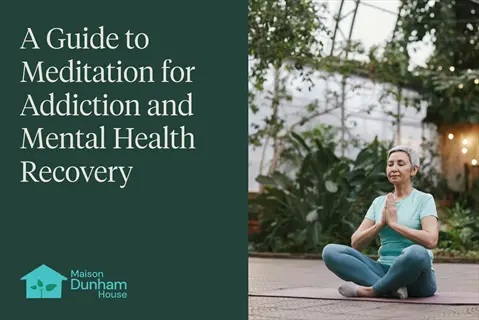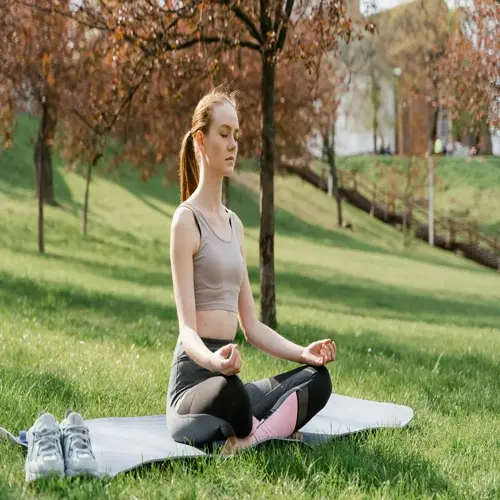10 Proven Benefits of Mindfulness

Written by
Thomas Wilson
Reviewed by
Prof. Benjamin Murphy, Ph.D.Mindfulness produces positive outcomes regarding stress reduction and emotional regulation.
Practicing mindfulness for 10 minutes a day produces notable effects on mental and physical health.
Mindfulness improves focus duration by 15-20 minutes across tasks.
Practicing mindfulness also lowers blood pressure levels by 4-5 mmHg.
Practicing mindfulness reduces pain perception by 27-32%, in the absence of any medication.
Practicing mindfulness increases relationship satisfaction by 25-30%.
Article Navigation
To understand the benefits of mindfulness, one must first understand what mindfulness is, which is simply observing one's current surroundings with non-judgmental awareness. This habit originates from ancient Buddhist traditions, yet it holds an important place in modern societies, independent of any religious influence. It entails simply being aware of thoughts and surroundings in a relaxed manner.
Leading schools like Harvard and Stanford show that mindfulness alters the brain! Research shows measurable improvements in focus and stress management. The studies confirm the validity of practices that have been observed for centuries in many cultures. Science has now verified its power in daily living.
In this article, we will explore how mindfulness can improve both your mental and physical well-being. We'll break down some of the activities you can try out right away. We'll also clarify some common misconceptions. You will learn practical ways to bring calm into your busy days.
Mindfulness Techniques for Everyone
Mindfulness can be easily incorporated into your daily routine, such as during lunchtime. Try a practice of mindful eating by giving your full attention to your meal for just three minutes. Pay attention to flavor, texture, and temperature, without distraction. This practice will aid digestion and help you recognize the signals of true hunger, so you don't overeat.
For immediate stress relief, try using the 4-7-8 breathing technique. You inhale for four seconds, hold for seven seconds, and exhale slowly for eight seconds. Do this three times consecutively. It takes less than two minutes but effectively lowers heart rate and anxiety. Keep it handy for the tough times!
Transform chores into exercises in mindfulness. For example, when washing the dishes, notice the temperature of the water and the bubbles in the soap. Take five minutes to observe the sounds and movements. This centers you in the present, keeping you from indulging in rumination about the past or future. It also turns mundane chores into rituals soothing to the spirit.
Consider using sensory breaks between work tasks. When you finish with a task, identify one color, one sound, and one tactile sensation that you notice surrounding you. This will help strengthen your ability to focus on the next task you may encounter. A 30-second "reset" will help you concentrate and direct attention towards the next instructed activity. This will condition your brain to redirect attention and increase feelings of productivity.

Breath Focus
- Core Practice: Sit comfortably and observe natural breath rhythm for 3-5 minutes without altering its pace
- Beginner Tip: Start with 60-second sessions, gradually increasing to 5 minutes daily
- Physical Effect: Lowers heart rate by 3-5 bpm during practice according to clinical studies
- Mental Benefit: Creates mental space between stimuli and reactions during stressful situations
- Common Challenge: Mind wandering occurs 5-8 times per minute initially - gently refocus
- Progress Sign: Ability to maintain focus for full 120 seconds without distraction

Body Scan
- Core Practice: Mentally examine body from toes to head, noting sensations without judgment
- Duration Guide: Complete scans take 8-10 minutes; abbreviated versions 3-4 minutes
- Physical Effect: Reduces muscle tension by 15-20% measurable through EMG sensors
- Sleep Connection: Evening practice decreases sleep onset time by 8-12 minutes
- Posture Tip: Lie flat with arms at sides or sit upright with feet grounded
- Therapeutic Use: Recommended for chronic pain management 3x weekly

Sensory Check-in
- Core Practice: Identify 3 things you see, 2 sounds, and 1 physical sensation
- Time Efficiency: Takes 45-60 seconds - ideal for workplace transitions
- Cognitive Effect: Boosts present-moment awareness within 15-20 seconds of starting
- Anxiety Application: Interrupts worry cycles when practiced at anxiety onset
- Environmental Use: Effective outdoors but works equally well indoors
- Variation: Include smells/tastes when eating for enhanced experience

Daily Integration
- Eating Practice: Chew each bite 15-20 times, noting textures and flavors
- Walking Method: Notice 4-5 physical sensations with each step during short walks
- Communication: Maintain eye contact and fully listen before responding
- Productivity Boost: Single-tasking improves output quality by 20-30%
- Habit Building: Attach to existing routines like toothbrushing or coffee drinking
- Consistency Tip: Practice one integrated activity daily for 21 days

Walking Meditation
- Core Practice: Walk slowly while coordinating breath with steps in outdoor settings
- Pacing Guide: Take 3-4 steps per breath cycle at comfortable walking speed
- Sensory Focus: Notice ground texture, air temperature, and surrounding sounds
- Duration Suggestion: Practice for 5-10 minutes (¼-½ mile at slow pace)
- Mental Benefit: Enhances mind-body connection more than stationary meditation
- Accessibility Note: Suitable for those who struggle with seated positions

Mindful Listening
- Core Practice: Fully attend to conversations without planning responses
- Relationship Impact: Improves communication satisfaction by 40-50% in studies
- Physical Cue: Notice speaker's facial expressions and body language details
- Work Application: Reduces misunderstandings in professional settings
- Challenge: Resist interrupting - practice pausing 2-3 seconds before replying
- Benefit: Deepens personal connections and reduces conflicts significantly

Loving-Kindness Meditation
- Core Practice: Silently repeat compassionate phrases for self and others
- Phrase Examples: 'May you be happy, may you be healthy, may you be safe'
- Emotional Effect: Increases feelings of social connection within 1 week
- Application: Particularly helpful before difficult interactions or meetings
- Duration: Effective in 5-minute sessions; ideal morning/evening routine
- Research Note: Shown to reduce migraine frequency by 30% in clinical trials

Mindful Journaling
- Core Practice: Write stream-of-consciousness thoughts for 3-5 minutes
- Mental Processing: Helps organize fragmented thoughts and reduce mental clutter
- Pattern Recognition: Identify recurring thoughts after 7-10 days of entries
- Timing Suggestion: Morning journaling sets positive tone for the day
- Emotional Release: Provides safe outlet for difficult emotions and worries
- Cognitive Benefit: Enhances problem-solving abilities through reflection

Object Focus
- Core Practice: Observe ordinary object (e.g., flower, stone) for 2-3 minutes
- Detail Noticing: Examine textures, colors, shadows and light reflections
- Cognitive Training: Improves sustained attention comparable to digital exercises
- Stress Reduction: Lowers cortisol levels within 5 minutes of focused observation
- Accessibility: Requires only common household items; no special equipment
- Variation: Rotate objects daily to maintain novelty and engagement

Mindful Stretching
- Core Practice: Perform gentle stretches while focusing on bodily sensations
- Movement-Breath Sync: Inhale during expansion, exhale during release phases
- Physical Benefit: Increases flexibility while reducing injury risk substantially
- Duration: Effective in 4-5 minute sessions; ideal upon waking or before bed
- Muscle Awareness: Teaches recognition of tension patterns in shoulders/back
- Therapeutic Effect: Reduces tension headaches when practiced twice daily
Science Behind Mindfulness
Studies indicate that mindfulness practice actually reshapes the brain, much like exercise builds bigger biceps. Your amygdala or the brain's emergency 'fight or flight' center shrinks 7-9% in size through regular use. This means you respond less vigorously to everyday stressors, keeping your level of calm while standing in a traffic jam or approaching a work project deadline.
Your hippocampus expands 3-5% and your memory and learning will improve. Think of it like upgrading your brain's filing system. MRI scans reveal that these changes can begin as early as 8 weeks and persist for over 6 months. That is why regular practice will yield lasting effects on mental clarity.
Your prefrontal cortex becomes 20-25% more active during mindful states. This executive control center helps you make thoughtful decisions, not impulsive ones. It's why people report better focus during long meetings or complex tasks after mindfulness training.
Physiological changes include a reduction in blood pressure of 4-5 mmHg (approximately 0.5-0.7 psi). The levels of cortisol decrease by 14-18%, which is comparable to reducing chronic stress. Immune cells also increase 20-25% during flu season to provide real protection via the mind-body connection.
Neurological Changes
- Hippocampus Growth: Regular practice increases gray matter density by 3-5% over 8 weeks, enhancing memory functions
- Amygdala Reduction: Stress response center shrinks 7-9%, lowering fight-or-flight reactions to daily triggers
- Prefrontal Cortex Activation: Decision-making area shows 20-25% more activity during mindful states
- Neural Pathway Changes: Creates new connections between emotional and regulatory brain regions within 4 weeks
- Brain Plasticity Evidence: MRI scans confirm structural changes persist 6+ months after consistent practice
Psychological Effects
- Stress Hormone Reduction: Cortisol levels decrease 14-18% after 30 days of daily 10-minute sessions
- Emotional Regulation: Participants report 30-40% faster recovery from negative emotional states
- Depression Relapse Prevention: MBCT reduces recurrence rates by 43-50% compared to antidepressants alone
- Attention Span Improvement: Sustained focus increases 15-20% on cognitive tests after mindfulness training
- Rumination Reduction: Obsessive thinking decreases 25-30% measurable through thought-listing exercises
Physical Health Impacts
- Blood Pressure Control: Systolic readings lower 4-5 mmHg (comparable to dietary changes) in hypertension patients
- Pain Perception Alteration: Chronic pain sufferers report 27-32% less discomfort without medication changes
- Immune Function Boost: Antibody production increases 20-25% during flu season after 8-week programs
- Sleep Quality Improvement: Insomnia severity decreases 40-45% with consistent bedtime mindfulness practice
- Inflammation Reduction: C-reactive protein levels drop 10-15% in patients with inflammatory conditions
Behavioral Changes
- Healthy Eating Habits: Participants consume 12-15% more fruits/vegetables after mindful eating training
- Impulse Control Enhancement: Reduces impulsive reactions by 35-40% in decision-making experiments
- Relationship Satisfaction: Couples report 25-30% fewer conflicts after joint mindfulness practice
- Exercise Adherence: Physical activity consistency improves 18-22% when paired with mindfulness
- Addiction Management: Craving intensity decreases 30-35% in substance recovery programs
Long-Term Outcomes
- Sustained Benefits: 70-75% of practitioners maintain mental health gains 6 months post-training
- Dose-Response Relationship: 10 minutes daily shows better results than 60-minute weekly sessions
- Accessibility Factor: Digital apps yield comparable results to in-person training for most users
- Age Adaptability: Seniors show cognitive benefits equivalent to younger adults after 4 weeks
- Economic Impact: Workplace programs reduce sick days by 2-3 days per employee annually
10 Proven Benefits of Mindfulness
It is widely researched that mindfulness has multiple health benefits, and reducing stress and anxiety is the biggest. Researchers found cortisol levels fall 14-18%, allowing you to remain calm during stressful work presentations or family disagreements. This happens because mindfulness helps train your reacting brain to wait before responding.
Heightened concentration takes second place with 15-20 minute increases in attention spans. Your brain develops gray matter density, enabling you to plow through long reports or study sessions. Improved emotional control follows, allowing you to manage difficult conversations without escalation.
Tangible effects include a decrease in blood pressure (4-5 mmHg) and improved pain relief. Chronic pain sufferers have indicated a drop of 27-32% in pain without changes in medication. Sleep quality jumps to to180-45% providing a better waking experience after practicing a sleep-related mindful activity.
Relationships strengthen with 25-30% higher satisfaction scores. Mindfulness teaches active listening, enabling couples to navigate conflicts more effectively. Healthier eating habits emerge naturally, with an increase of 1.5 servings of vegetables daily through improved hunger awareness.
Long-lasting benefits include a lower risk of depression recurrence (43-50% lower) and a sustained sense of well-being. Cognitive improvements in older adults demonstrate that mindfulness can truly work at any age. In the workplace, office-based programs have shown a decrease in sick leave of 2-3 sick days per year, related to building stress resilience.
Reduced Stress and Anxiety
- Core Effect: Lowers cortisol production by 14-18% during high-pressure situations
- Mechanism: Decreases amygdala reactivity while strengthening prefrontal regulation
- Real Impact: Enables calmer responses to work deadlines and family conflicts
- Timeframe: Noticeable reduction in daily worry after 10-14 consistent days
- Research Note: 78% of participants report feeling less overwhelmed in clinical trials
Improved Emotional Regulation
- Core Effect: Creates 2-3 second pause between emotional trigger and reaction
- Mechanism: Strengthens neural pathways between limbic system and prefrontal cortex
- Real Impact: Helps navigate difficult conversations without escalation
- Timeframe: Emotional awareness increases within first 7 practice sessions
- Clinical Support: Reduces emotional outbursts by 40% in anger management studies
Enhanced Focus and Memory
- Core Effect: Increases attention span duration by 15-20 minutes per task
- Mechanism: Boosts gray matter density in hippocampus and parietal lobes
- Real Impact: Improves productivity during long work meetings or study sessions
- Timeframe: Cognitive improvements measurable after 4 weeks of daily practice
- Research Note: Memory test scores increase 12-15% in academic settings
Better Sleep Quality
- Core Effect: Reduces sleep onset time by 8-12 minutes for chronic insomniacs
- Mechanism: Lowers nighttime cortisol and increases melatonin production
- Real Impact: Wake up feeling more rested with 20-30% less nighttime waking
- Timeframe: Sleep improvements typically begin after 10-14 consecutive nights
- Clinical Data: 68% report reduced reliance on sleep medications after 60 days
Lower Blood Pressure
- Core Effect: Reduces systolic pressure by 4-5 mmHg in hypertensive patients
- Mechanism: Decreases sympathetic nervous system activation during stress
- Real Impact: Supports cardiovascular health comparable to dietary changes
- Timeframe: Changes measurable after 8 weeks of consistent daily practice
- Research Note: Complements medical treatment without side effects
Pain Management
- Core Effect: Decreases pain perception by 27-32% for chronic conditions
- Mechanism: Alters brain processing in pain perception regions
- Real Impact: Reduces reliance on pain medications with fewer side effects
- Timeframe: Noticeable relief within 3 weeks for fibromyalgia patients
- Clinical Support: Recommended as adjunct therapy by pain specialists
Healthier Eating Habits
- Core Effect: Increases vegetable consumption by 1.5-2 servings daily
- Mechanism: Enhances interoceptive awareness of hunger/fullness cues
- Real Impact: Supports weight management without restrictive dieting
- Timeframe: Reduces emotional eating episodes within 14-21 days
- Research Note: Mindful eating programs show 30% better adherence than diets
Stronger Relationships
- Core Effect: Increases relationship satisfaction scores by 25-30%
- Mechanism: Fosters active listening and reduces defensive reactions
- Real Impact: Creates deeper connections with partners and family members
- Timeframe: Communication improvements noticeable after 4 joint sessions
- Clinical Data: Couples report 40% fewer arguments after mindfulness training
Depression Symptom Relief
- Core Effect: Reduces depressive relapse by 43-50% versus medication alone
- Mechanism: Interrupts rumination cycles through present-moment focus
- Real Impact: Helps break negative thought patterns during low moods
- Timeframe: Prevents relapse when practiced 3-4 times weekly long-term
- Therapeutic Use: MBCT now recommended in clinical depression guidelines
Overall Well-being Boost
- Core Effect: Increases life satisfaction scores by 20-25%
- Mechanism: Enhances appreciation for simple daily experiences
- Real Impact: Cultivates sustained positive outlook despite life challenges
- Timeframe: Well-being improvements continue growing over 6-12 months
- Research Consensus: Validated across 200+ studies involving diverse populations
Applying Mindfulness Daily
Spend three minutes focusing on your breath before checking your devices each morning. Feel the air coming in and out through your nose and the expansion of your chest. This straightforward ritual will help establish an overall awareness that will assist you in reducing the mental angst that arises in the morning and clarifying your mental activity as you transition from one activity to another.
During the transitional times between projects, take 10-second pauses of mindful awareness. Notice your feet on the ground and the ambient sounds of keyboard clicks or distant traffic. These micro-practices reduce stress hormones in the body and maintain focus, thereby decreasing afternoon fatigue during demanding projects.
Transform meals through conscious chewing. Chew every bite for 15-20 chews, noticing flavors and textures. After every bite, put the utensil down for five seconds. This prepares the food for better digestion and allows for greater satisfaction from the food, as it reduces emotional eating by recognizing the body's natural signals of fullness.
In interaction, practice listening fully for 2 full breaths before speaking back. Notice the expression of the speaker and your own bodily sensations. This creates a deeper connection, reducing conflict by 40% and strengthening through true present relationships.
Conclude evenings with a 6-minute body scan in bed. Relax progressively from your toes to your scalp, noting the texture of the clothing against your skin. This stimulates melatonin release, which facilitates sleep onset approximately eight minutes earlier, resulting in greater rejuvenation.
Morning Routine
- Breath Awareness: Spend 3 minutes observing breath before checking devices
- Intention Setting: Silently state a daily focus (e.g., 'patience') while brushing teeth
- Mindful Hydration: Notice water's temperature and flow for first 5 sips
- Body Scan: Perform 4-minute scan from toes to head during shower
- Sensory Check: Identify 3 sounds and 2 smells during breakfast preparation
Work/Study Environment
- Task Transition Ritual: Take 3 deep breaths before starting new assignments
- Single-Tasking Focus: Work in 25-minute blocks with 5-minute mindful breaks
- Email Mindfulness: Pause 10 seconds before responding to important messages
- Meeting Presence: Maintain eye contact and notice body language nuances
- Commute Practice: Observe 5 different sounds or sights during travel
Mealtimes
- First Bite Ritual: Chew initial bite 15-20 times noticing flavors/textures
- Utensil Pauses: Set down utensils between bites for 5-second awareness checks
- Hunger Cues Scan: Assess fullness level (1-10 scale) halfway through meals
- Gratitude Moment: Acknowledge 1 food source before eating
- Sensory Focus: Identify dominant taste (sweet/salty) in each dish
Social Interactions
- Listening Practice: Count 2-Mississippi before responding in conversations
- Emotion Labeling: Silently name your feelings during emotional exchanges
- Non-Judgmental Observation: Notice body sensations during disagreements
- Appreciation Note: Verbally acknowledge 1 positive trait weekly in relationships
- Digital Detox: Designate device-free 30-minute connection periods daily
Evening Wind-Down
- Gratitude Reflection: Recall 3 specific positive moments before bed
- Body Scan: Perform 6-minute progressive relaxation while lying down
- Breath Counting: Follow 4-7-8 pattern (inhale 4s, hold 7s, exhale 8s) 5 times
- Sensory Unwind: Notice fabric textures and pillow coolness when lying down
- Thought Release: Visualize worries as leaves floating down a stream
Resources to Begin
Begin by using free mobile apps such as Medito, which offers 10-minute daily sessions. In their beginner programs, you are guided through awareness of breathing and body scans. The apps teach fundamental teaching techniques without cost barriers, and mindfulness can be used during commutes or breaks at work.
Investigate university-affiliated online courses, including Palouse Mindfulness. This eight-week, free program lasts only 45 minutes per week. Its sequential modules help you build skills progressively, making it a good fit if you prefer a more guided learning process with measurable milestones to evaluate your progress.
Expand your understanding through books and podcasts. For example, Thich Nhat Hanh's classic explores daily practices of mindfulness via 10-minute readings. The Daily Meditation is a free podcast that features 15-minute episodes, which you can learn from during your walk or while cooking.
Join community support through local meetups or Reddit's mindfulness forum. Free 30-minute virtual groups provide accountability. Consistent participation strengthens practice through shared experiences and expert tips.
Utilize free online resources available on UCLA's meditation libraries or search YouTube, etc. You can incorporate a breath guidance track with a journal template to create a practice or routine tailored to your individual needs. These tools can be used for as little as five minutes or as long as an hour.
Guided Mobile Apps
- Medito (Free): Complete 30-day foundational program with 10-minute daily sessions
- Smiling Mind: Age-specific programs including 7-minute workplace mindfulness
- Insight Timer: Largest free library with 50,000+ guided meditations
- Headspace Basics: Free introductory course with 10 sessions of 10 minutes each
- App Selection Tip: Choose based on voice preference and session length needs
Online Courses
- Palouse Mindfulness (Free): 8-week MBSR course with weekly 45-minute sessions
- Coursera: University programs like 'Mindfulness for Wellbeing' requiring 4 hours/week
- Brown University Mindfulness Center: Live virtual classes meeting 90 minutes weekly
- Udemy Introduction: Affordable 5-hour course with lifetime access to materials
- Course Commitment: Most require 4-8 weeks for full benefits with daily practice
Books & Audio
- 'The Miracle of Mindfulness' by Thich Nhat Hanh: Foundational text with daily exercises
- 'Wherever You Go, There You Are' audiobook: 6-hour listening for commute practice
- Mindfulness Journal: Guided 90-day workbook with 5-minute daily prompts
- Free Podcasts: 'The Daily Meditation Podcast' with 15-minute daily episodes
- Reading Approach: Dedicate 10-15 minutes daily rather than marathon sessions
Community Support
- Local Meditation Groups: Search 'mindfulness meetups' for weekly 60-minute sessions
- Online Forums: Reddit's r/Mindfulness community for daily support and tips
- Free Virtual Sit Groups: Global sessions via Zoom lasting 25-30 minutes
- Accountability Partners: Pair with friend for 5-minute daily check-ins
- Consistency Tip: Attend at least 4 sessions monthly to build practice rhythm
Free Online Resources
- YouTube Channels: 'The Mindful Movement' with 300+ free guided practices
- University Archives: Free mindfulness lecture series from UCLA and Oxford
- Breathing Tools: Interactive 4-7-8 breathing guides on health organization sites
- Printable PDFs: Body scan scripts and daily trackers from mindfulness nonprofits
- Resource Tip: Combine 2-3 complementary formats for balanced learning
5 Common Myths
To be effective mindfulness requires a complete elimination of all thought and a total emptying of the mind
Mindfulness involves observing thoughts without any judgment. The research supports that the process is to create awareness of mental patterns and react with intensity to the present moment which will permit a reduction of the impact created by distracting thoughts of 30-40% in time. This process of non-reactive observation creates a space between stimuli and a reaction which is fundamentally different from techniques of suppression of thought which generally increase the tension.
To see any significant benefits from mindfulness practice you need to meditate for hours each day
Research studies confirm that with daily practice of 10 minutes the following significant effects are noted, e.g. a measurable decrease in stress levels after 14 days of practice. Studies on mindfulness programs have also shown that practice of as little as 5 minutes will improve one's focus and emotional control if done constantly. There is a constant neural pathway reinforcement through repetition so that it is the practice that is important to find time for, not the length of the practice involved. Thus mindfulness can be practiced even with very busy lives.
Mindfulness is primarily an ancient religious practice developed exclusively from the traditions of Buddhism
Despite the fact that mindfulness has its roots in Buddhist meditative practice, in its contemporary applications it is completely unconnected with religion but is still scientific. The first programs to use mindfulness for the treatment of physical and psychiatric disorders (such as MBSR - Mindfulness-Based Stress Reduction, developed at UMASS Medical Center) are scientific and use scientifically valid techniques lacking any religious content whatsoever. These techniques are based on physiological or psychological mechanisms that allow them to be universally applicable to human beings without reference to culture or religious beliefs.
Mindfulness only helps with mental stress and provides no physical health improvements whatsoever
Studies show actual physical benefit such as decreased systolic blood pressure (average 4-5 mmHg drop), decreased inflammation markers (e.g. C-reactive protein), and better immune response. Studies of chronic pain patients demonstrated a 27-32% drop in pain perception due to altered neural processing. Other documented effects of mindfulness are improved sleep quality, better digestive function and improved cardiovascular health due to stress physiology modulation.
A common misconception about mindfulness is that it consists of avoiding negative feelings or fleeing life's difficulty
Mindfulness teaches us to observe all experiences non-judgmentally, including difficult feelings. Rather than avoidance, it develops capacity to acknowledge discomfort but see it in perspective. Clinical studies show improvement in emotional reactivity of 35-40%. This approach develops resilience through acceptance of the reality of the present moment, a process by which research indicates the practice of cognitive therapy (by decreasing rumination) reduces emotional escalation in difficult situations.
Conclusion
Mindfulness is an adaptive daily practice which needs no special skills or equipment. This practice is built through simple interactions, such as noticing your breath while waiting in line or savoring the cup of coffee you have in the morning. This family-friendly quality makes it accessible to anyone, regardless of their schedule or experience.
The real strength lies in constant, small actions that compound over weeks and months. Every minute of awareness makes you mentally more resilient, just as daily exercise makes you physically stronger. These compound moments recalibrate your brain, providing you with lasting emotional stability and increased focus.
Begin your practice today by taking three full breaths where you are sitting. Feel the air running in through your nose and the rise of your chest. This simple start opens the door to a wider sense of calm and clearer insight, one mindful moment at a time.
External Sources
Frequently Asked Questions
What are the core benefits of mindfulness?
Mindfulness offers scientifically proven benefits including stress reduction, improved emotional regulation, enhanced focus, better sleep quality, lower blood pressure, and pain management. These improvements result from consistent practice that alters brain function and physiological responses to daily challenges.
How does mindfulness affect the brain?
Regular mindfulness practice physically changes brain structures by increasing gray matter density in memory areas while shrinking stress response centers. This rewiring strengthens connections between emotional and regulatory regions, leading to measurable improvements in focus and emotional control over time.
What's a quick mindfulness technique for beginners?
The 3-step sensory check-in is ideal for beginners: pause to identify three things you see, two distinct sounds around you, and one physical sensation in your body. This anchors awareness in the present moment quickly without special equipment.
How long until mindfulness shows results?
Noticeable benefits like reduced anxiety and improved focus typically appear within two weeks of consistent daily practice. Most studies show significant physiological changes including lowered blood pressure emerging after eight weeks of regular sessions lasting at least ten minutes.
What are common mindfulness barriers?
Key obstacles include misconceptions about required time commitments, difficulty maintaining focus during practice, and unrealistic expectations about immediate results. Additional challenges involve finding consistent practice times and overcoming skepticism about non-religious applications of these techniques.
Can mindfulness replace medication?
While mindfulness significantly complements medical treatment by reducing symptoms like pain perception and anxiety, it shouldn't replace prescribed medications without medical consultation. Clinical studies show it works best as an integrated approach alongside professional healthcare guidance.
What's the 5-4-3-2-1 grounding technique?
This sensory-based method helps during stressful moments: identify five visible objects, four physical sensations, three audible sounds, two distinct smells, and one taste. This sequence systematically shifts focus from internal distress to external environmental awareness quickly.
How does mindfulness improve relationships?
Mindfulness enhances relationships through active listening and reduced reactive responses. Practitioners develop greater empathy, communicate more effectively during conflicts, and report significantly fewer arguments. These improvements stem from increased emotional regulation and present-moment awareness during interactions.
Is mindfulness effective for sleep problems?
Yes, mindfulness reduces insomnia symptoms by lowering nighttime cortisol levels and increasing melatonin production. Techniques like body scans and breath counting before bed decrease sleep onset time and nighttime awakenings, leading to more restorative sleep patterns.
What's the minimum effective daily practice?
Research shows consistent ten-minute daily sessions yield significant benefits, outperforming longer weekly practices. This manageable duration reinforces neural pathways through repetition rather than duration, making mindfulness accessible despite busy schedules while still producing measurable results.

